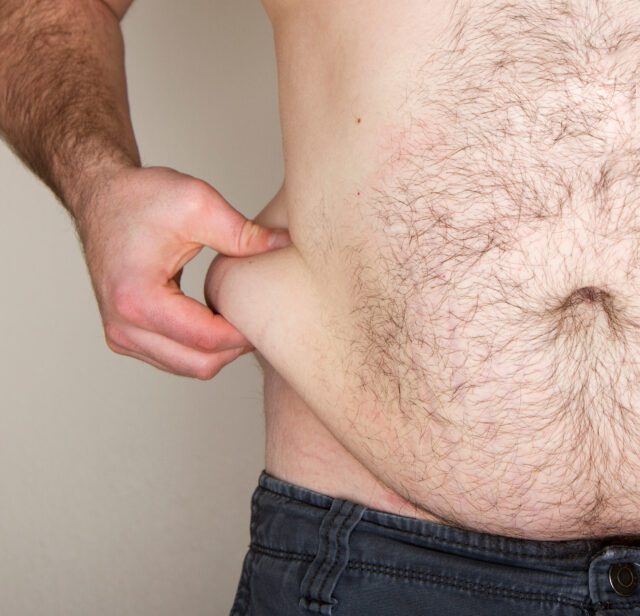Yes, you know that obesity is a problem. You’ve heard that it is associated with 162,000 deaths every year due to resultant cancers, conditions and diseases. You understand that it poses a significant financial strain on the American economy to the tune of $270 billion dollars per year in medical costs and decreased productivity. And you probably agree something should be done before 2015, when the World Health Organization (WHO) predicts that 700 million of the world’s population will be obese.
You get it. But how far would you be willing to go to prevent it?
In 2008, Japan implemented a rather controversial campaign to quash national obesity. They passed a law that set waistline restrictions in accordance with the National Diabetes Foundation guidelines—33.5 inches for men and 35.4 inches for women—for citizens age 40 and 74. This age bracket represented 44% of their population, or 56 million people, who would be required to get measured at every annual check-up.
If these individuals exceed the limit, they will be considered at risk for obesity-related conditions like diabetes and heart disease and will be offered exercise and dieting guidance. If after six months they still don’t meet the requirement, they will be given further re-education.
In an effort to motivate the cause, the government will also impose fines for companies and local governments whose people consistently fail to meet these requirements.
It’s an innovative approach to a serious issue, but the question remains: will this be the next step for America in its fight against obesity? The consensus among Americans is that this is a gross violation of human rights. A law that dictates your waistline? How dare they! But the campaign has proven to have as many pros as cons. After hearing the argument, you might change your mind about how this campaign measures up.
PROS
It’s working… almost.
Only 1 in 20 Japanese individuals is obese, whereas 1 in 3 Americans is obese. The variance is staggering, and indicative that the U.S. could take a lesson in leanness. When Japan first implemented the law in 2008, they set a goal of decreasing the overweight population by 10% over the next four years and 25% over the next seven years. As one of the thinnest industrialized nations, they are well on their way to meeting those projections. But the weight loss is skewed, with women moving toward the low end of the spectrum, while 40% of men in their 40s and 50s are still considered overweight (see Cons).
It makes the individual accountable.
Too often, obesity is a blame game. Eating healthy is expensive, working out is hard, the obese demographic is uneducated… these excuses all play a part in the issue to some extent, but they don’t solve the problem. By requiring the individual to take action on their weight, both by getting checked and then following through with education, they are more likely to approach the issue head on. If the resources are made available, in the form of check-ups, guidance and education, then it becomes the individual’s responsibility to take every opportunity to get healthy.
It changes the way we view the issue.
In our society, we make it very easy to detach ourselves from the issue of obesity… or, as the Japanese now call it, “metabo.” The effects are long-term, the costs are indirect, the condition is someone else’s. This system lessens the apathy by introducing immediate ramifications for being overweight and enforcing fines that could potentially affect an entire community; local governments and companies will likely transfer fines to the people. It will be an instantaneous and unfortunate consequence, but it won’t compare to the cost these individuals would otherwise pay in healthcare due to obesity-related disease.
What’s more, the federal government could use the money obtained through these fines to subsidize nutrition education and other health programs. Ultimately, it should be expensive to be fat. It may sound callous, but we often view obesity as an upshot of low-income lifestyles and people having to turn to unhealthy foods because it’s more cost-effective. By reversing this standard, we can potentially reverse the dangerous trend.
It increases the necessity for diet and exercise.
Sure, we understand the importance of eating well and staying active; but, in this country, we see these behaviors as an optional life choice. Enforcing waistline restrictions compels individuals to take these steps to reduce their weight and, simultaneously, their health risks. They can still eat whatever they want, theoretically; they just have to make sure their activity level compensates for their diet.
It provides the tools to succeed.
A campaign like this is only effective if it has the resources to make it possible. Individuals under this program are provided education and guidance if at first they don’t meet the requirements. This is the element the U.S. government is lacking with some of their approaches to obesity. They will take an obese child away from their parent in the name of negligence, when a mandatory re-education program could be just as effective but less upsetting for the family. Education, subsidies and stricter standards could be the only way to effect a permanent change.
CONS
It’s having a reverse effect.
Now four years after the law was passed, Japan is struggling with the opposite problem: women are becoming too thin. A record 29% of women in their 20s are considered underweight by Japanese standards, with a body mass index of less than 18.5. This age range is not required to follow any waistline guidelines, but it’s possible that the country’s stringent weight standards are having a trickle-down effect. Young women are seemingly more sensitive to societal pressures that focus on looks and weight, and this weight loss could be the demographic’s reaction to an increasingly negative stigma toward obesity.
Although the Japanese government does not consider this a major health concern yet, they are keeping an eye on how it might affect birthrates. The U.S. would also have to consider how the law might influence eating disorders; almost 24 million Americans of all ages and genders already suffer from anorexia, bulimia or binge-eating disorder, and such a campaign might increase the likelihood that individuals will use these techniques for weight management.
The waistline isn’t always an effective indicator of obesity.
Many are criticizing the Japanese guidelines as being too strict; saying that, based on their measurement restrictions (again, 33.5 inches for men, 35.4 inches for women), nearly 50% of the demographic would be considered overweight. The standards set by the American College of Sports Medicine are a little more forgiving, setting the high-risk waist circumference at 40.2 inches for men and 34.6 inches for women. They do support the reality that abdomen fat is the most dangerous kind, increasing the risk for chronic disease; but different body types will mean different measurements, and a wider waist doesn’t always equate to an unhealthy body.
It might discourage citizens from going on their annual check-ups.
Unfortunately, there will always be those who try to skirt the system. While some can probably get by in life without checking in with their doc, the fear is that at-risk patients will miss out on necessary screenings and treatments in an effort to avoid the measuring process. Think about it: if you know you haven’t been flossing, you dread going to the dentist. The fear of being chastised might compel some to step up their routine, while others would just assume not make the appointment. When it comes to health, especially that of overweight individuals, that avoidance could be dangerous.
This might not be the appropriate solution for our society, but no option should be off the table when discussing solutions to this epidemic. The campaign in Japan might just reignite the dialogue about how the U.S. plans to address our own problem. This might be an extreme measure, but obesity is an extreme issue. If we do not come up with a solution that reverses this devastating trend, our society and economy will surely suffer.
If our weight is costing 162,000 lives and millions of dollars every year, do we really have the right to be fat? Or should we have to sacrifice our elastic waistbands for the greater good? It might be a decision you have to make before the government makes it for you.
Insider’s Health Exclusive –>>: Click Here to Find out The ONE “Weird Trick” that reduces your terminal disease risk by OVER 70% (and NONE of us are doing it)









